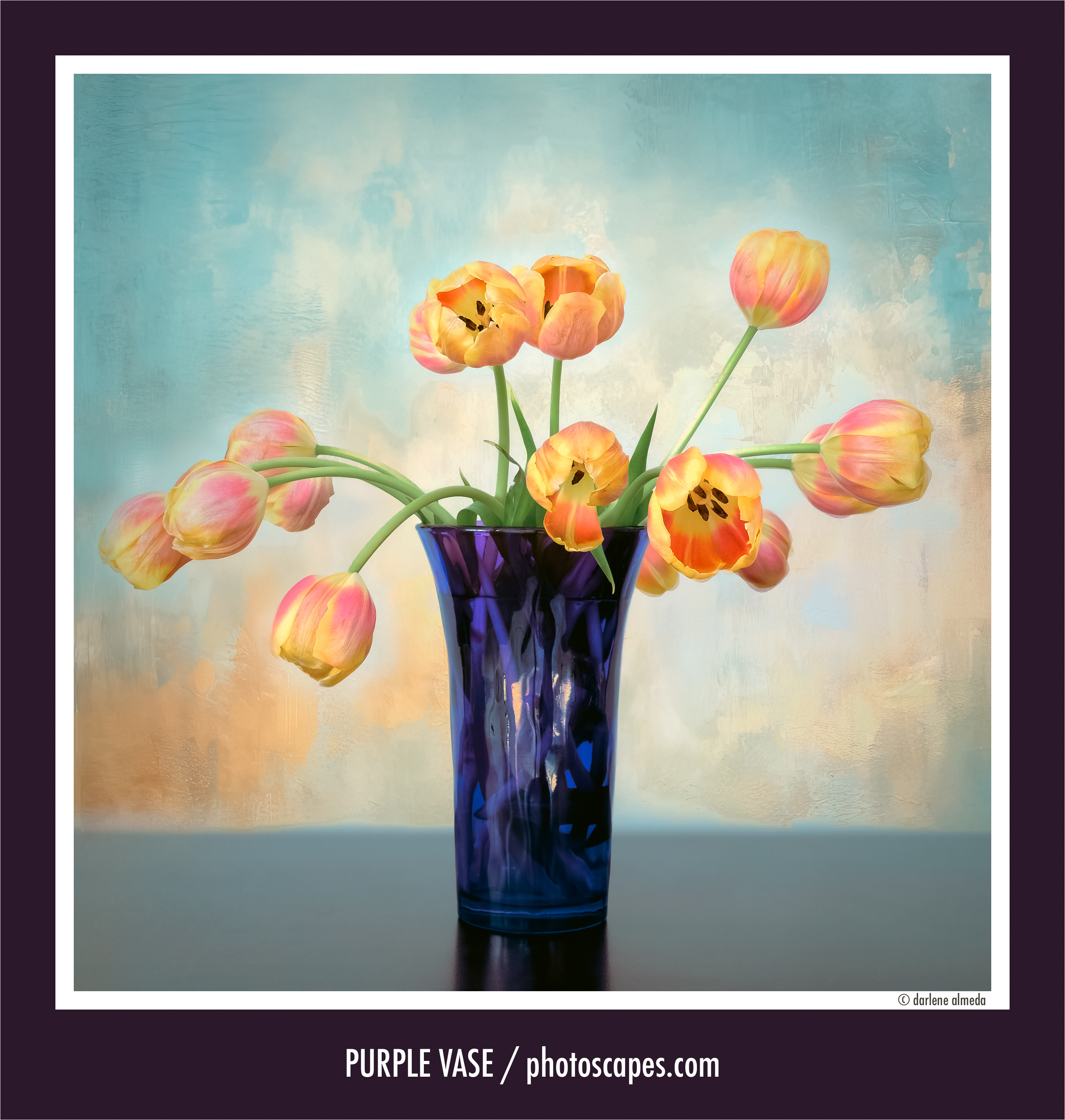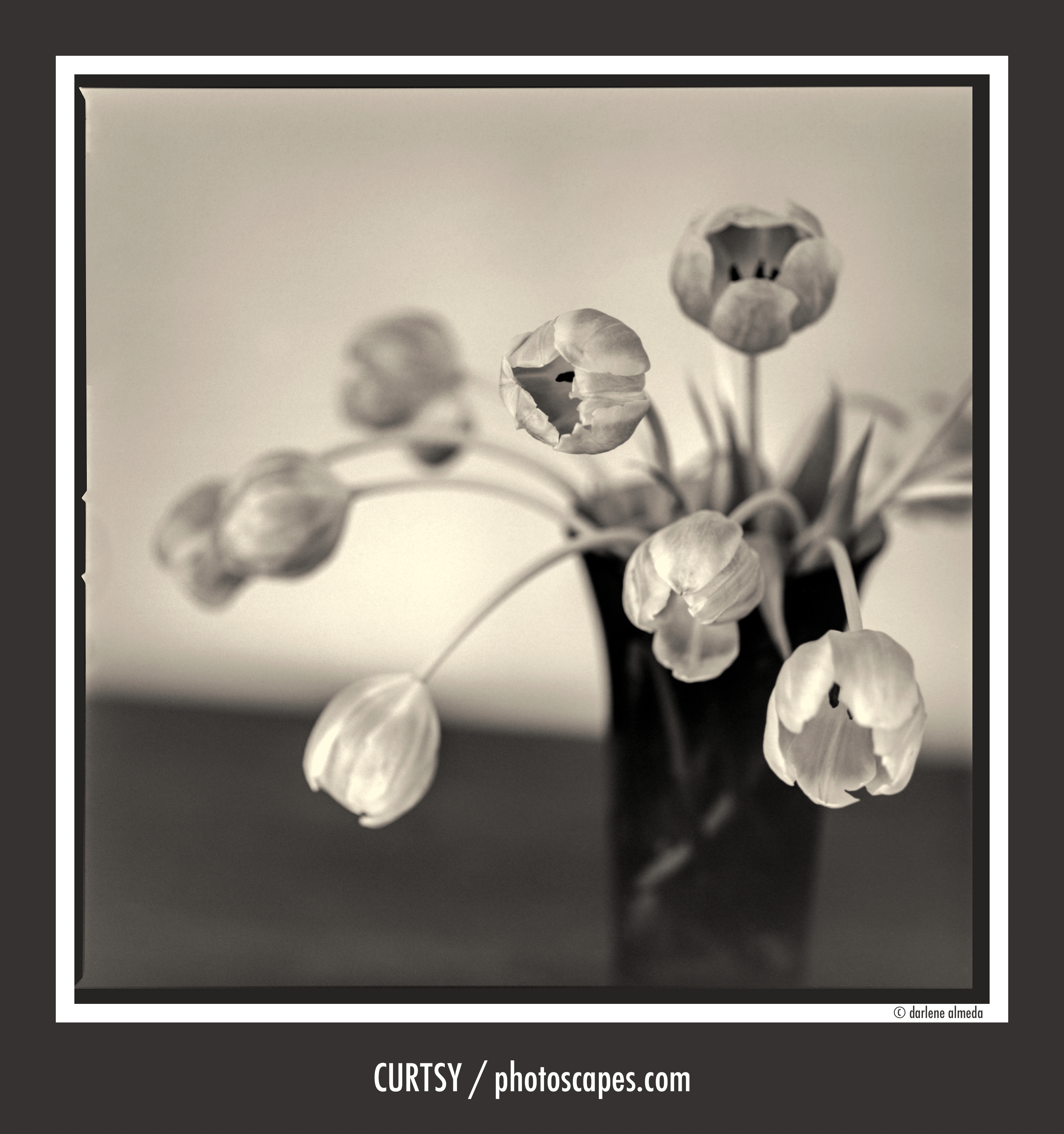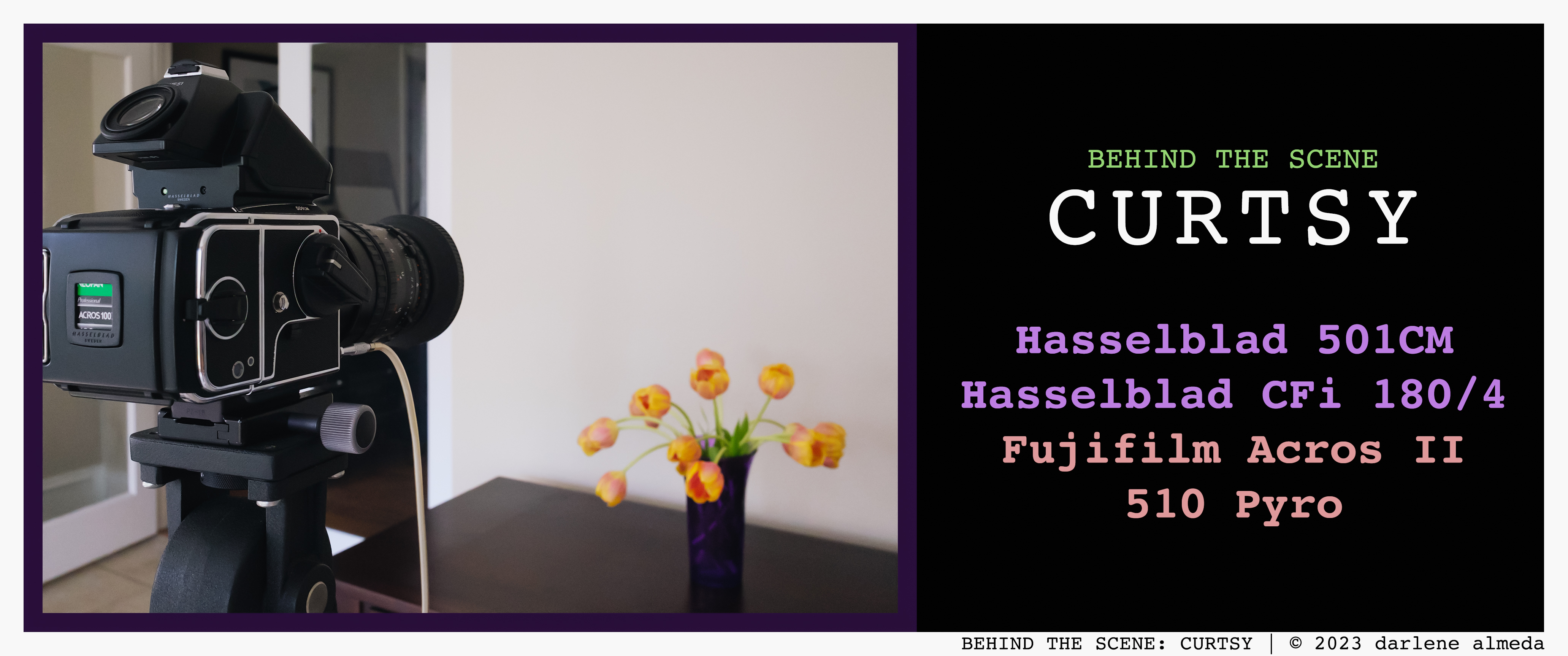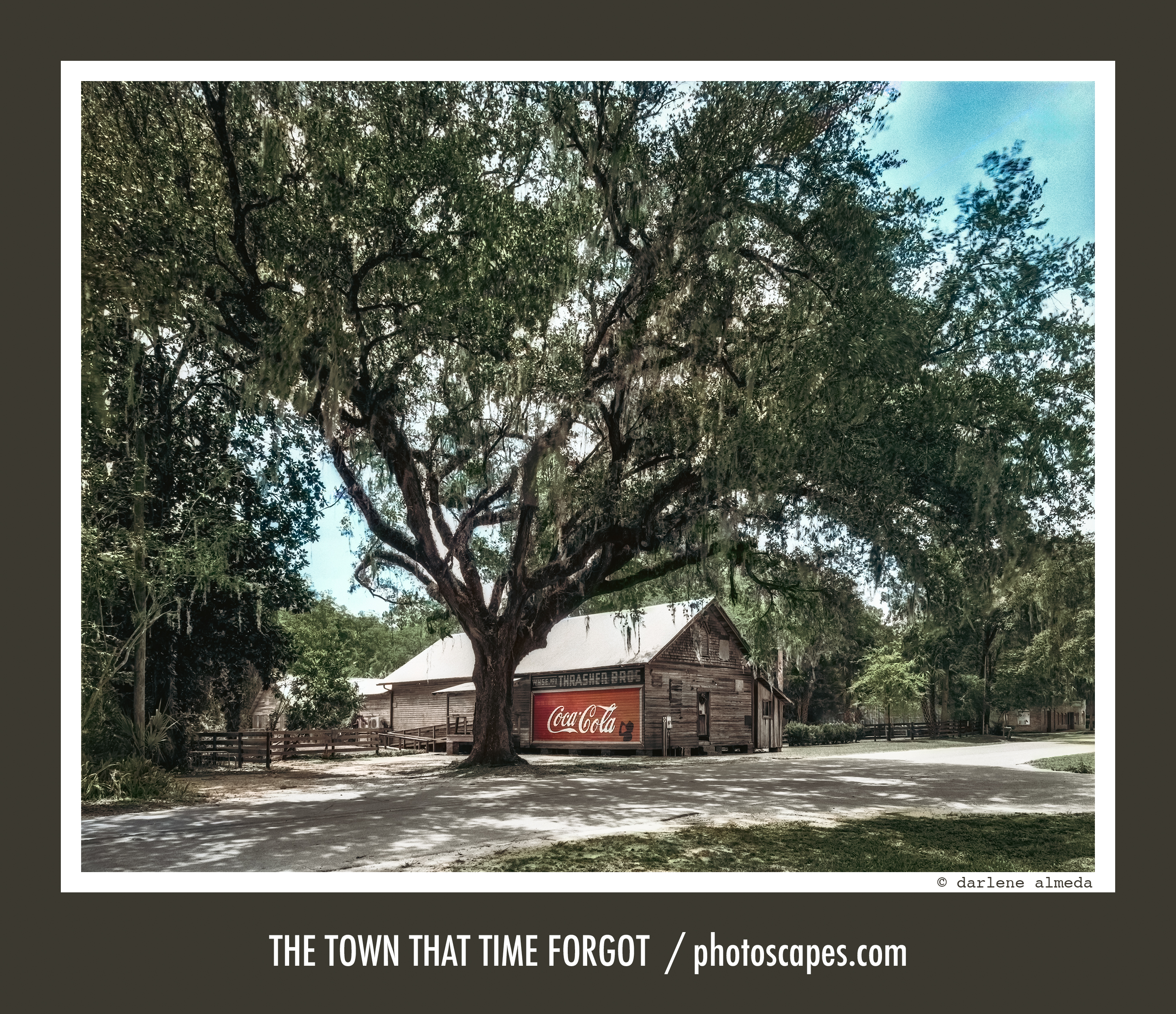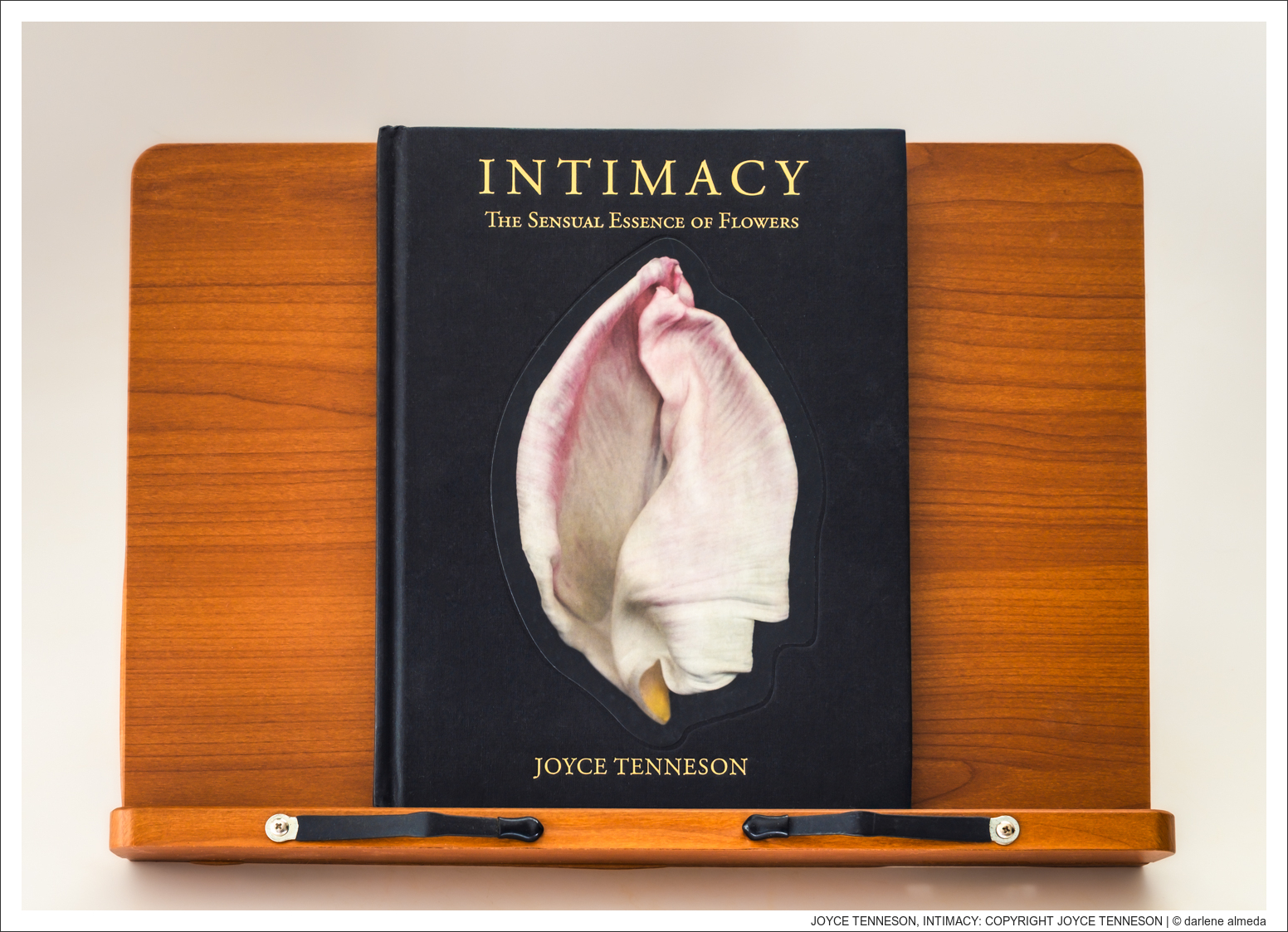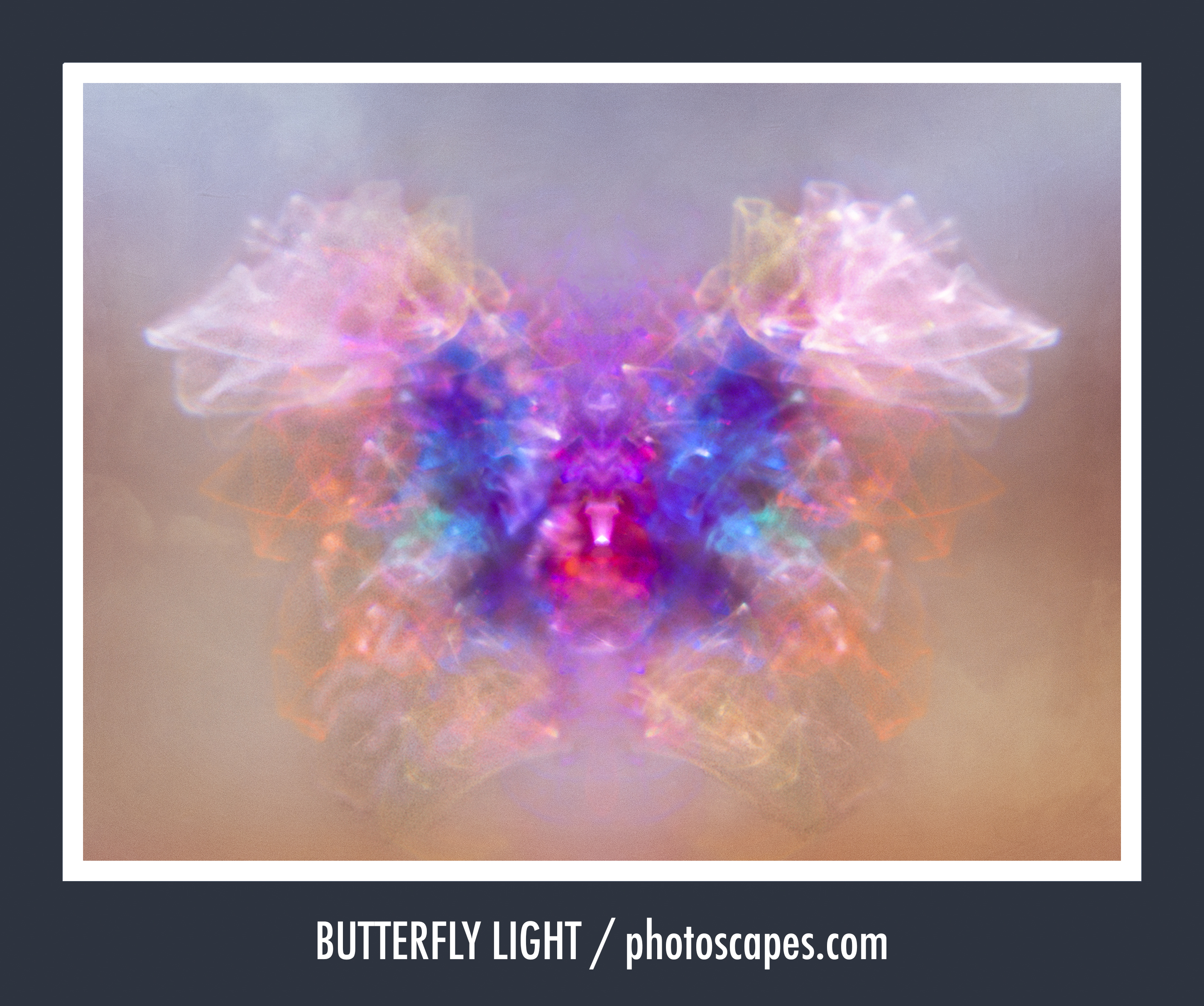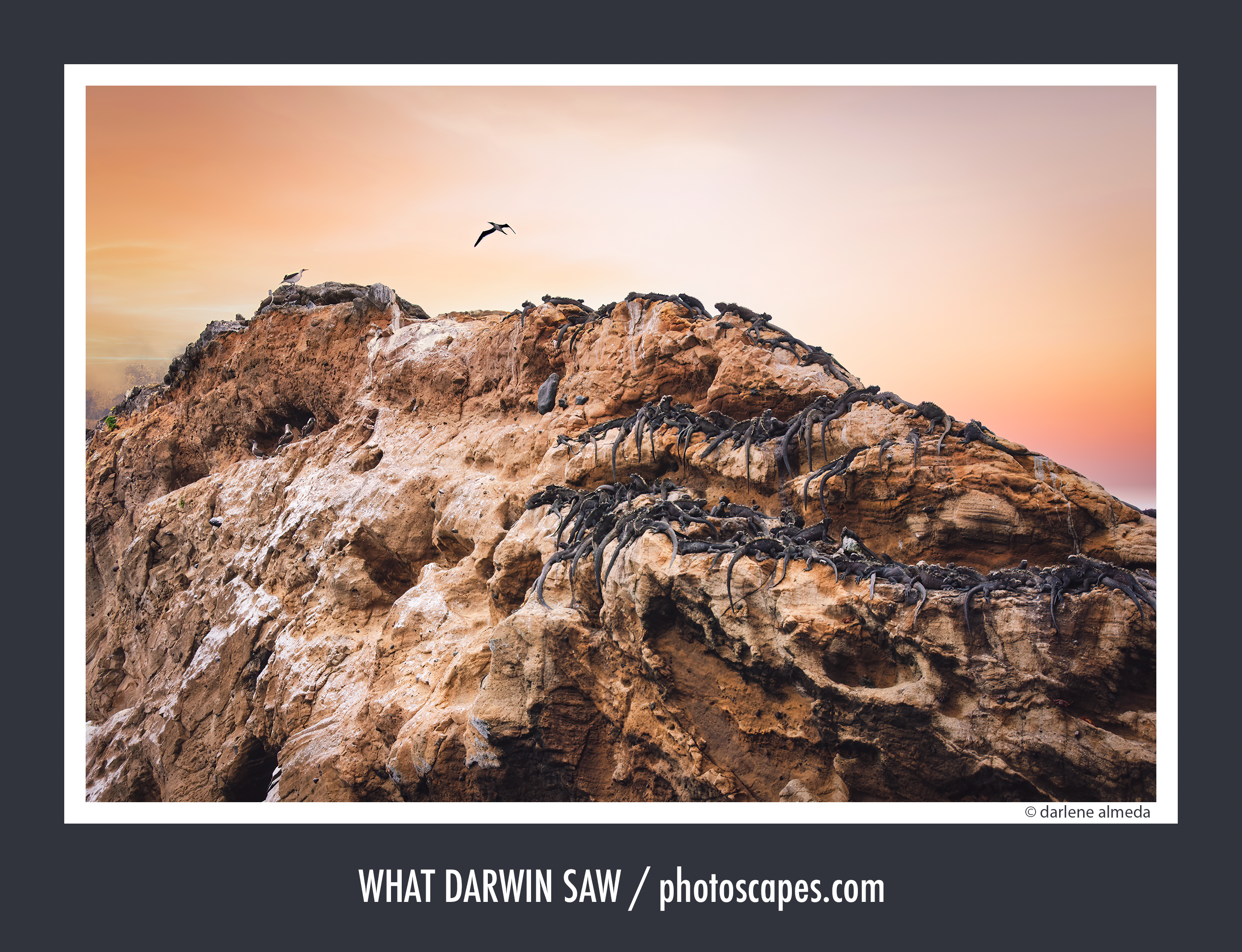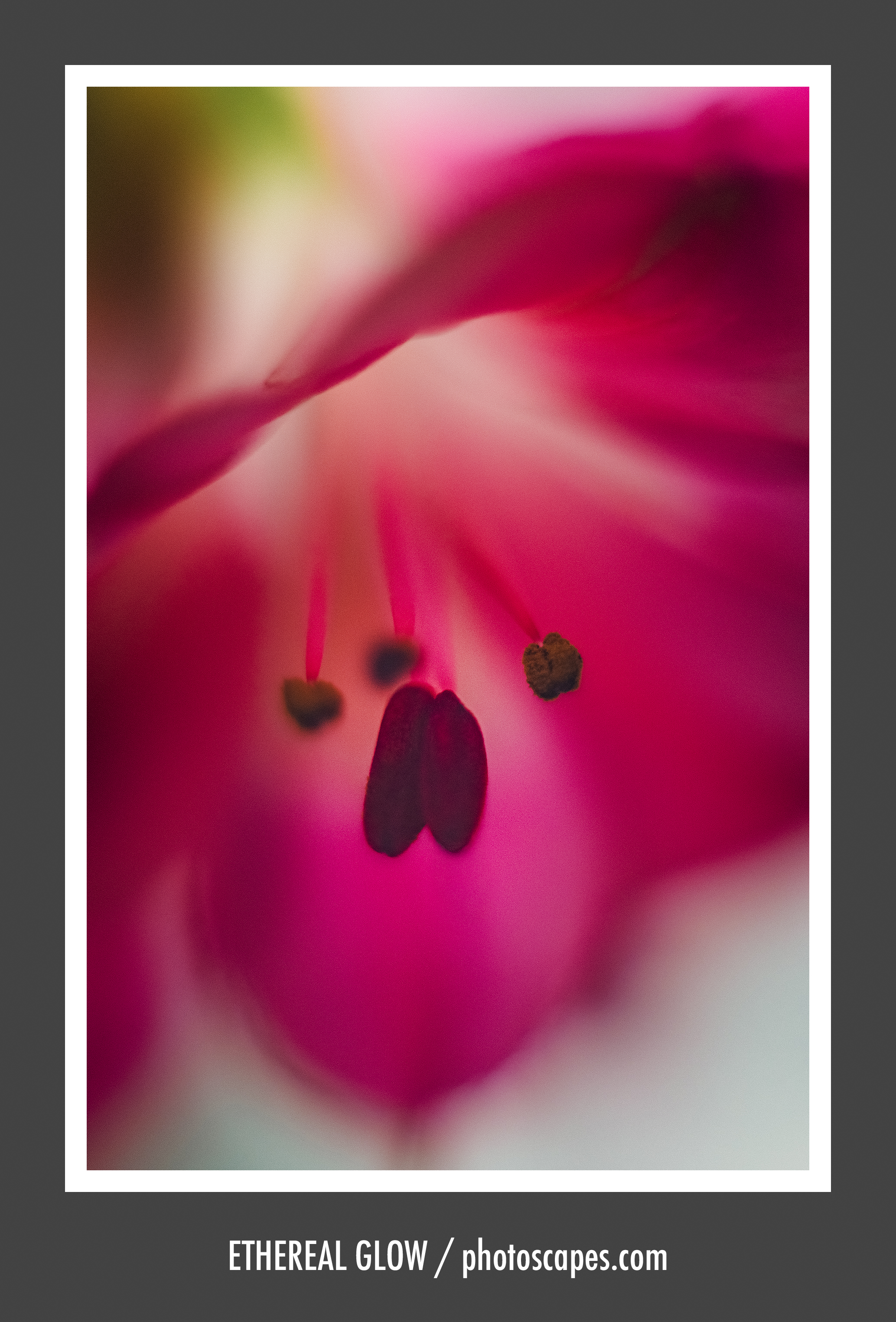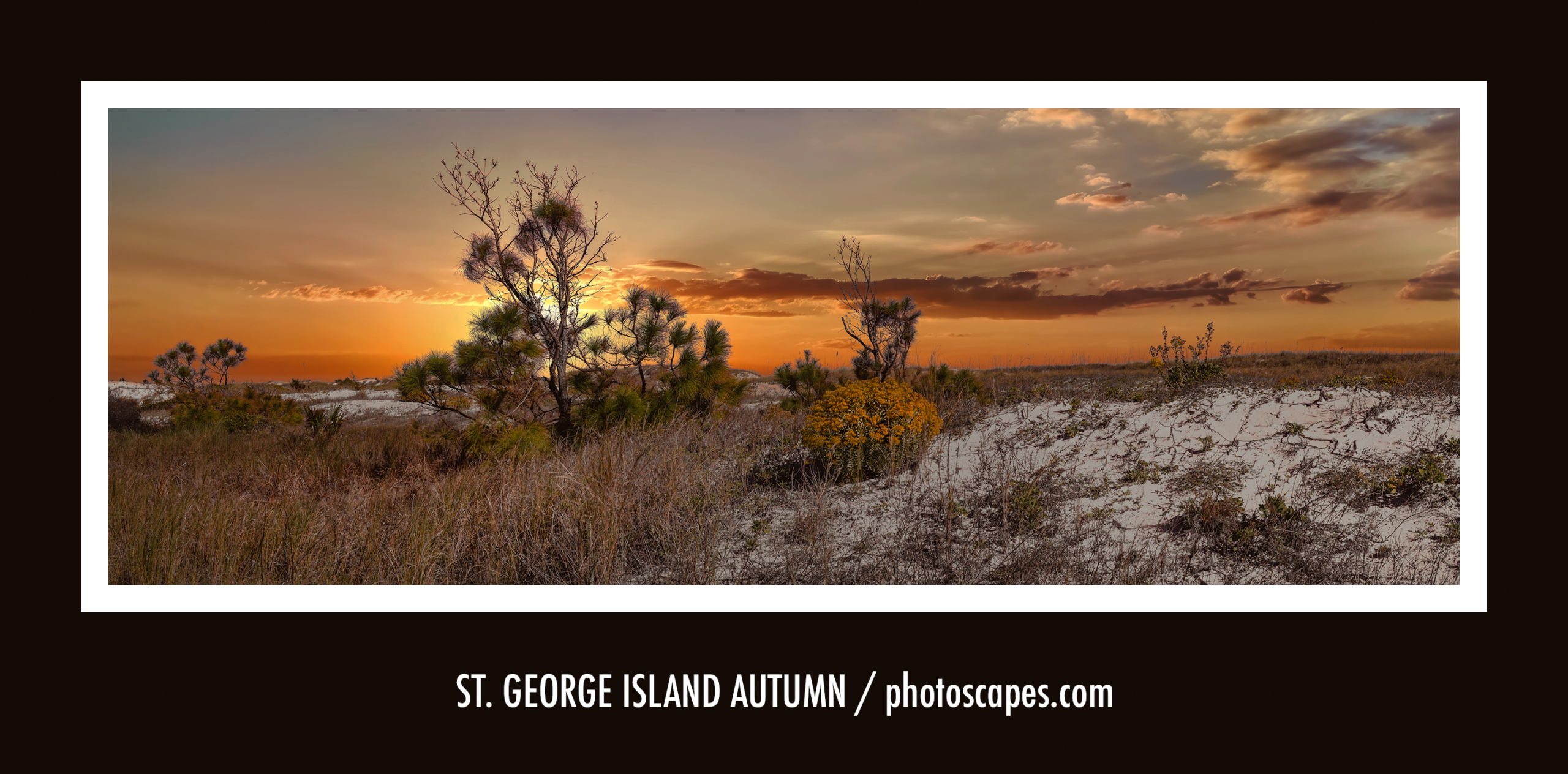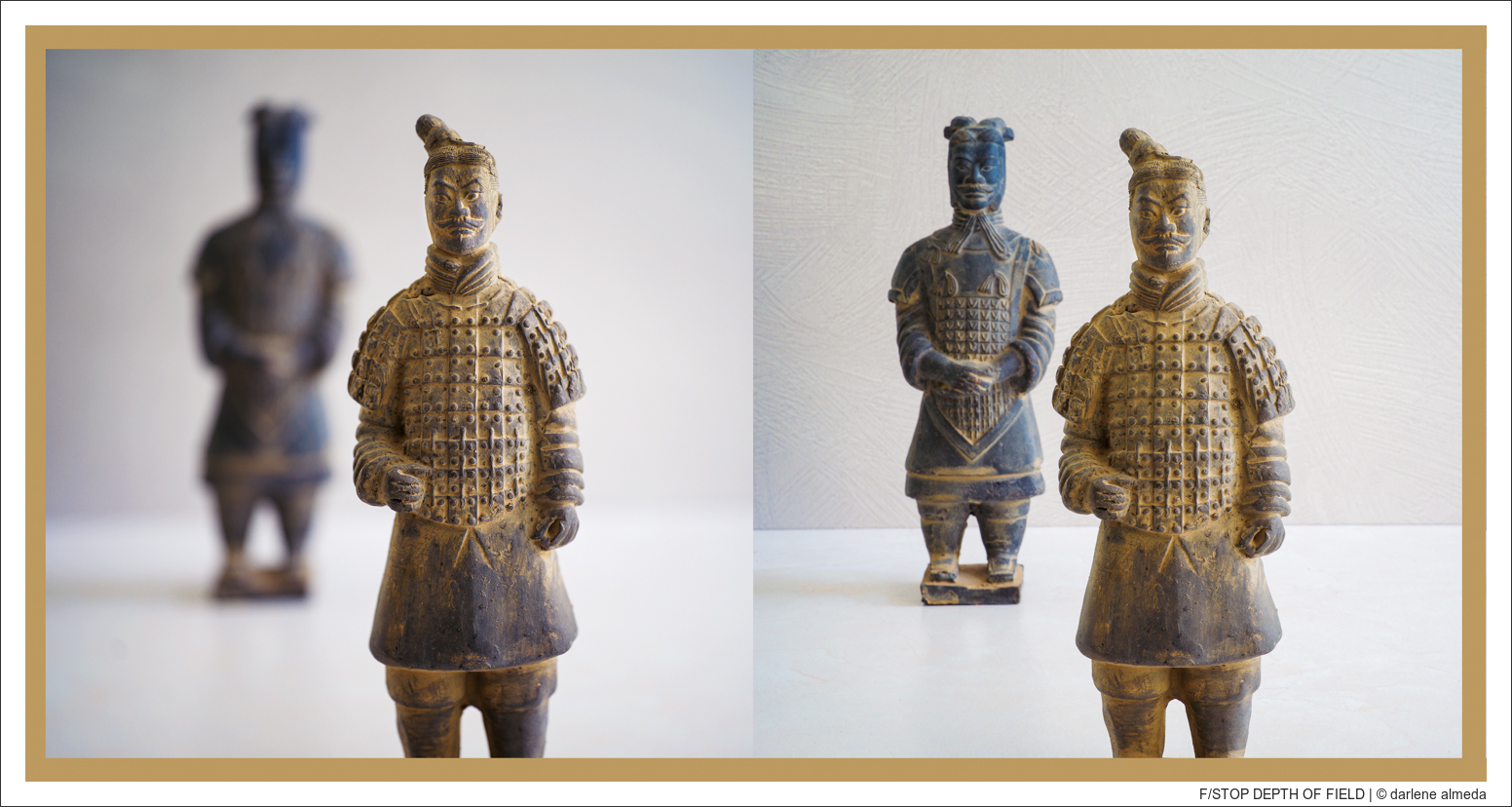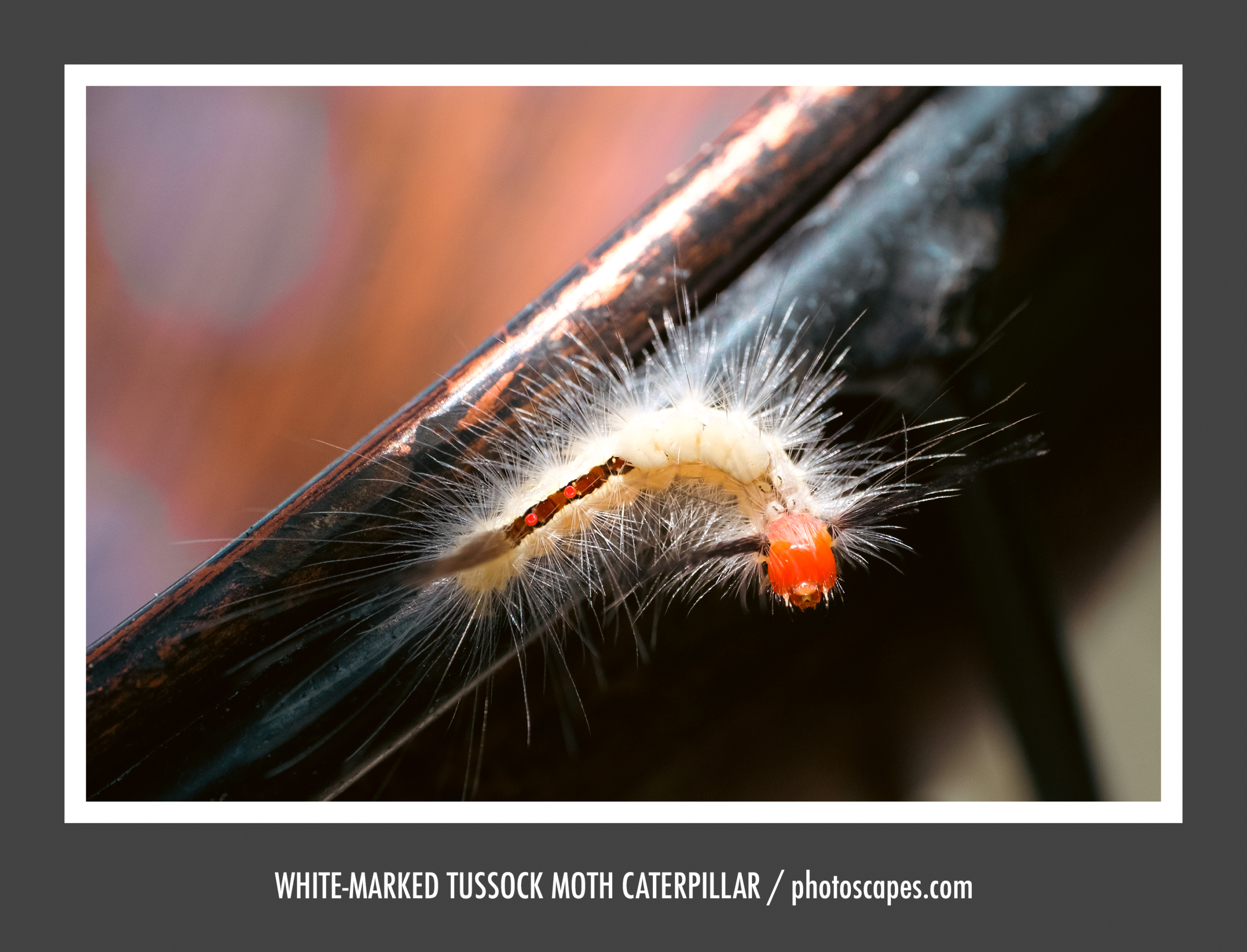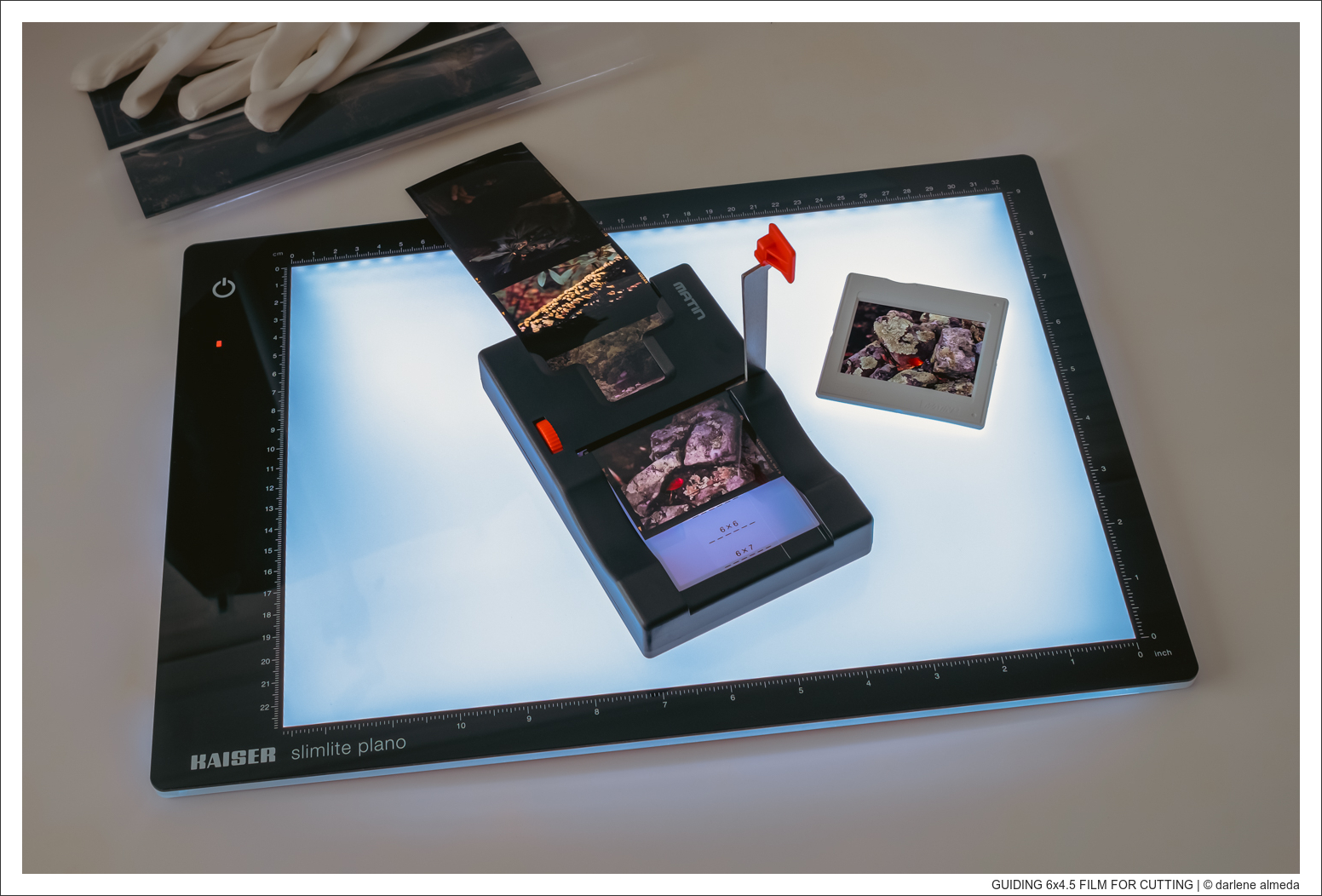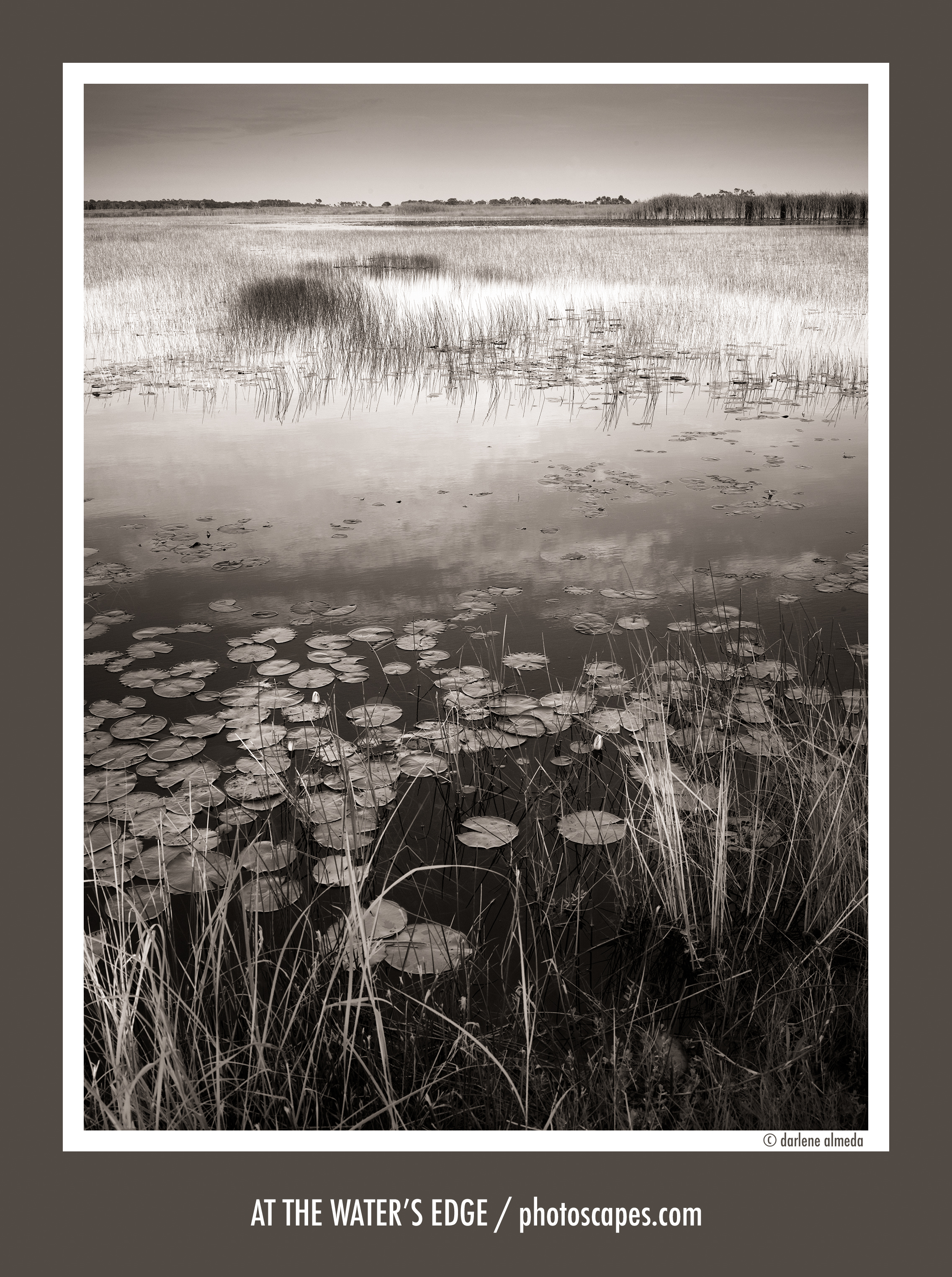[ click each image to see it alone ]
PURPLE VASE
Camera: Fujifilm X100V
Lens: XF 23/2
Digital: 26 MP [24×16] CMOS
Software: Adobe Lightroom
Camera: Hasselblad 501CM
Lens: Hasselblad CFi 180/4
Film: Fujifilm Acros II
Dev: 510 Pyro / Semi Stand
I recently came across some unprocessed digital files from my Fujifilm X100V, taken in early 2023—about a month before I finally settled with my insurance company after a weather-related disaster shut down my home studio for over a year. What a mess that was! I still remember how much I longed to get back to creating in my studio.
What makes these files interesting is not just their rediscovery but also what I photographed. Have you ever captured the same composition using two completely different camera formats? I’m not just referring to differences in digital sensors but rather the contrast between a black-and-white film image taken with a long lens and a compact digital camera with a fixed lens—one that, when compared to the longer lens, offers an entirely different perspective. If you haven’t tried this, I highly recommend it. The results, as shown above, can be quite fascinating!
Both images were taken in the studio with available window light, just minutes apart. I believe this happened because my Fujifilm X100V was nearby, and I decided to capture a quick behind-the-scenes shot of the Hasselblad camera and lens at work. I likely also wanted a color reference in case I later chose to hand-color the monochrome film image. Either way, when I recently revisited the X100V file, the colors immediately caught my attention, prompting me to process it.
During post-processing the X100V file, I incorporated an image of a painted backdrop from my collection. When shooting products professionally with digital cameras, I often use photographed backdrop files for background replacement in Photoshop or backdrops that have been photographed and then printed onto boards to place behind the subject during the shoot. In this case, the backdrop in the digital file was added in post, creating a different visual effect from the original scene.
A Tale of Two Images: Curtsy and Purple Vase
What makes this comparison so compelling is how two images, captured just moments apart, can tell such different visual stories. Though both showcase the same subject—a bouquet of tulips in a deep purple glass vase—their distinct formats, lenses, and processing methods result in entirely different aesthetics.
The Elegance of Curtsy (Black & White Film)
Shot on black-and-white film with a Hasselblad and a long lens, Curtsy possesses a timeless, poetic quality. The monochrome treatment eliminates color distractions, emphasizing the delicate interplay of light, shadow, and texture. With a shallow depth of field, the tulips appear to gracefully bend into the scene, reinforcing the theme of quiet resilience. The presence of film grain adds an organic, tactile element, evoking a sense of nostalgia and craftsmanship.
The Vibrance of Purple Vase (Digital Color)
In contrast, Purple Vase, taken with the Fujifilm X100V, embraces a lively, modern aesthetic. The tulips burst with warm hues of pink, yellow, and orange, standing out against the cool tones of the vase and the painterly backdrop. The digital clarity brings out the intricate details of the petals, while the post-processed background lends a soft, artistic feel. Compared to the film image, the wider perspective of the compact camera gives the composition a more expansive, airy quality.
Two Perspectives, One Subject
Each image holds its own beauty and character. Curtsy invites introspection, focusing on form and mood, while Purple Vase feels expressive and contemporary, celebrating color and vibrancy. Seeing them side by side reinforces the idea that photography is as much about interpretation as it is about technique.
This experiment reminded me how much creative potential exists in exploring multiple formats and perspectives. Whether working with film or digital, black and white or color, each approach offers its own unique voice. And in the end, that’s what makes photography so endlessly fascinating.

